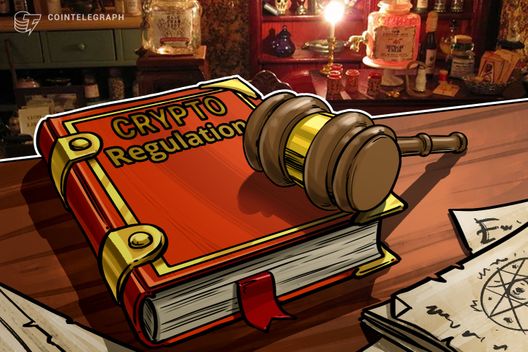14 years since the Bitcoin white paper: Why it matters
Happy white paper day, Bitcoin. It’s been 14 years since Satoshi Nakamoto first sent an email to the Cypherpunk mailing list with the subject line, “Bitcoin P2P e-cash Paper.” The email included a link to the white paper, an outline of what would soon become a one trillion-dollar market.
The first sentence of the email has become iconic among the Bitcoin community:
“I’ve been working on a new electronic cash system that’s fully peer-to-peer, with no trusted third party.”
Over the past 14 years, Bitcoin (BTC) has morphed from a hobbyist pastime into a globally recognized brand. Bitcoin has been adopted as legal tender in regions of the global south such as El Salvador and the Central African Republic. It is used by freedom fighters and campaigners while being a tool for financial emancipation and economic empowerment worldwide.

The speculative fervor that Bitcoin became known for still lingers while Bitcoin’s reputation as being a tool for illicit activities clings on, despite the fact that the United State dollar remains a far more effective tool for hiding financial activity.
In 2022, Bitcoin has evolved into so much more. Cointelegraph spoke to Bitcoin OGs, enthusiasts and newbies during the Plan B Conference in Lugano, Switzerland, to investigate what the white paper means to the world.
Doing its ₿it for good
For world-renowned charities such as Save the Children, the white paper and the subsequent creation of Bitcoin have benefited the organization. Antonia Roupell, Web3 lead at Save the Children, told Cointelegraph that the organization recognizes “Bitcoin’s potential to be a force for good and a force for financial inclusion,” adding:
“On Bitcoin’s 14th anniversary, and at a time of increasingly global financial inequality, the phrase ‘bitcoin is for anyone’ really resonates.”
Roupell explained that Save the Children US was the first iNGO to accept Bitcoin in 2013, stating, “Since then, we’ve raised almost 75 BTC thanks to generous donations to our relief efforts supporting children impacted by conflict in places like Afghanistan and Ukraine as well as families impacted by climate disasters such as Hurricane Ian in Florida.”
Crisis zones have underscored the resiliency and effectiveness of Bitcoin. In the first 48 hours of the Ukraine war, for example, the Ukraine government received $7.5 million in Bitcoin.
Stand with the people of Ukraine
Now accepting cryptocurrency donations. Ethereum. Bitcoin and Tether (USDTtrc20)BTC — 357a3So9CbsNfBBgFYACGvxxS6tMaDoa1P
ETH — 0x165CD37b4C644C2921454429E7F9358d18A45e14
USDT (trc20) — TEFccmfQ38cZS1DTZVhsxKVDckA8Y6VfCy
— Mykhailo Fedorov (@FedorovMykhailo) February 26, 2022
The speed at which Bitcoin hit government wallet addresses inspired the United Nations International Computing Centre (UNICC) to take crypto donations seriously, UNICC Director Sameer Chauhan explained in a Cointelegraph interview at the World Economic Forum in Davos. USD, British pounds, euros and government-issued money were much slower to trickle in to support the Ukrainian defense than Bitcoin.
Decentralization and empowerment
For Bitcoin Gandalf, a marketer for Braiins — a Bitcoin mining tools company — the white paper and the subsequent pseudonymous network guarantee a basic level of privacy. Gandalf, who chose to obfuscate his name and face on the internet, told Cointelegraph:
“With the increased surveillance propagated by the state and huge centralized tech companies that control the majority of information distribution, it’s more important than ever that we have decentralized alternatives that guarantee us basic freedoms.”
Bitcoin is a permissionless network that anyone can use. It does not discriminate. Even for those without an internet connection, thanks to innovations in mobile network technology, Bitcoin can be sent like a text. Bitcoin’s mantra of being a “freedom technology” has bloomed across its 14-year history.
During the Plan B conference in Lugano, Switzerland, “Freedom” was a central theme. Julian Assange’s family hosted talks about his incarceration for exposing military secrets, while speakers from Togo to Lebanon shed light on “Bitcoin the tool for financial freedom.” A drone show emblazoned the night sky with the cliché, bringing the Bitcoin and blockchain conference to a close:
#Bitcoin is Freedom pic.twitter.com/WjVvVsSBPB
— CARLA⚡️(thecryptoc0up1e) (@thecryptoc0up1e) October 29, 2022
Several announcements at the conference in Switzerland underscored the Bitcoin community’s commitment to freedom. Paolo Ardoino, chief technology officer of Tether, introduced Pear Credit, a peer-to-peer credit software that could undermine the proliferation of centralized authorities (or blockchains) that issue credit and tokens. Founded by Tether, Holepunch and Synonym, Pear Credit should “put control of the economy back in the hands of the people.”
In an exclusive interview with Cointelegraph, Ardoino explained the thinking behind Pear Credit, stating, “Everything that is not Bitcoin is credit. Everything that is not Bitcoin is inherently centralized.” His team has built a peer-to-peer service that offers the ability to issue credit — without a blockchain or product and without endless monetization.
In the spirit of the Bitcoin white paper, Pear Credit is “just open source libraries,” Ardoino commented. Pear Credit focuses on “scalability and privacy” and favors freedom to build open-sourced technology over chasing profits.
Gandalf said that the Bitcoin white paper “marked the beginning of the resistance to this trend” of centralizing power. Tech companies increasingly exploit customer data and online behaviors. Bitcoin, by contrast, is the largest demonstration of a peer-to-peer and privacy-centric network that continues to inspire projects that could undermine centralization.
Why do you care about the white paper?
John Carvalho, CEO of Synonym and contributor to Pear Credit, called for calm and introspection on the anniversary of the white paper. Carvalho, who also announced the creation of a new Bitcoin wallet app, Bitkit, during the conference, told Cointelegraph that even some of Satoshi Nakamoto’s biggest fans “will admit that he got some things wrong and how he thought things would play out. Even in the code.”
In a possible nod to the Bitcoin fanaticism and adulation for Nakamoto that sometimes transcends the space, Carvalho explained that even though Bitcoin continues to grow in importance due to greater levels of adoption, users and the amount of people trying to copy Bitcoin. “For me, and I think for most people, your Bitcoin birthday isn’t when Bitcoin was invented, it’s when you discovered Bitcoin.”
“I’d rather associate it with when you bought your first Bitcoin or when you had your own ‘eureka’ moment.”
Ultimately, while Nakamoto’s email on Oct. 31, 2008, marked the first brick in the foundations of the Bitcoin blockchain, it’s the developers, the builders, the node runners, the miners and the Bitcoin buyers that have kept the idea alive.
Bitcoin is indeed an effective form of remittance; it’s a spark that could ignite a path toward greater online freedoms, and it’s a meaningful shift away from centralized powers. But, Bitcoin is also a long line of code that millions of people worldwide choose to follow and contribute to every day.
Raise a glass to Satoshi, sure, but also take the time to reflect on your own Bitcoin journey. When’s your Bitcoin Birthday, anon?









